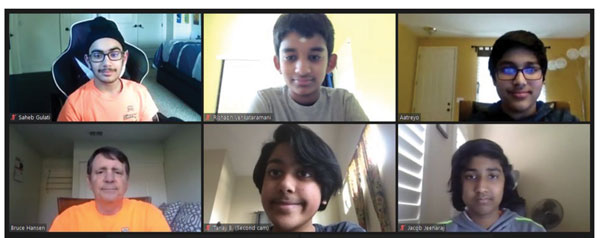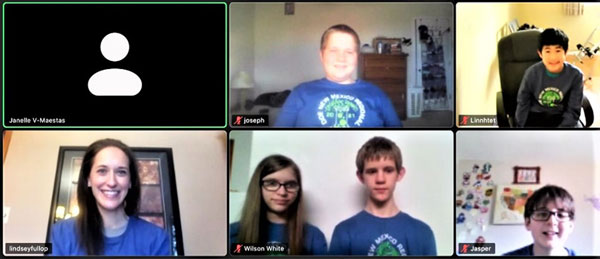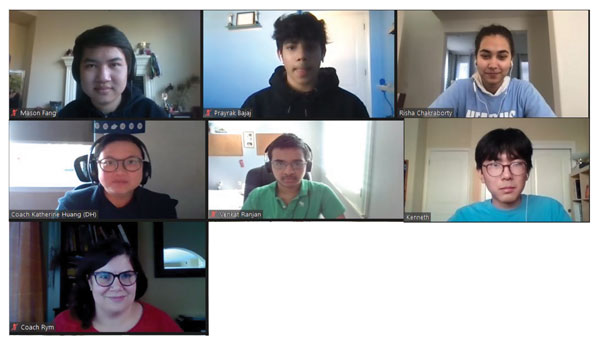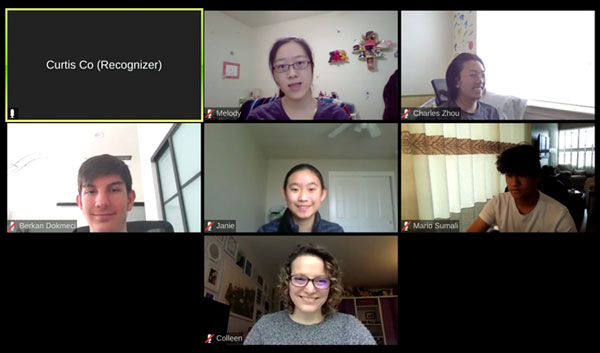
Would you know the correct sequence of calcium, chlorine and magnesium in increasing order of atomic radius?
Those who do competed in this year’s Sandia-sponsored Middle School and High School Regional Science Bowls. More than a dozen middle school teams and 24 high school teams from Clovis to San Diego participated in the two Sandia/CA-sponsored regionals earlier this year.
In California, Winston Churchill Middle School in Carmichael won first place among younger teams, followed by Windemere Ranch Middle School in San Ramon in second place and Granite Ridge Intermediate School in Clovis. Los Alamos Middle School in Los Alamos beat 10 other teams from five schools to win the New Mexico competition.
Dougherty Valley High in San Ramon, California, took first place honors in the Bay Area Regional, followed by two teams from Mission San Jose High School in Fremont in second and third. La Cueva High in Albuquerque was the best of seven teams from three New Mexico schools.
Volunteers made virtual bowl work

Coordinator Tim Shepodd said dozens of volunteers from Sandia, Lawrence Livermore National Lab and elsewhere — as well as 40 volunteers in New Mexico — had to learn alongside the students about how to conduct the Science Bowl virtually.
“We have 50 officials from Sandia and other places who had to learn a new job,” Tim said. “We had two cameras on each team, one on their faces and one on their environment to make sure they weren’t using phones. One official reads the questions, one official watches the teams and one records the official scores.”
The high school and middle school teams also had to adapt, and did it well, Tim said.
“You do get to see the students’ reactions online and they seem comfortable with the virtual format,” he recalled. “You can see the ‘darn it’ and ‘hooray’ kind of moments for them.”

In the virtual format, each team was read a fixed set of questions at the same time. The scorers tallied the correct answers to determine the winners.
Cheryl Garcia coordinated the competition in New Mexico and said the virtual aspects didn’t cause much difficulty, but noted that fewer schools participated than in years past.
DOE helped beam in volunteers
Tim said that Sandia received plenty of support from the National Science Bowl organization at DOE before and during the competitions.
“If we were short a volunteer, we just had to reach out to the national office to find a volunteer from somewhere in the country,” he said, adding that he felt the competition was a real success. “You do miss the energy of in-person competition. Some of the esprit de corps is missing. But yes, I think it was. It was different and it worked.”
Tim said he was grateful that so many Sandians volunteered their time and energy to help administer the Science Bowl.

The Department of Energy National Science Bowl, for winning teams from all over the nation — including Winston Churchill Middle School and Dougherty Valley High School — will be held virtually on May 8 and May 22. To learn more about Sandia’s sponsorship of the Science Bowl and schools in each community, click here.
The answer, by the way, to the question above, one of the sample questions students could study, is chlorine, magnesium and then calcium.